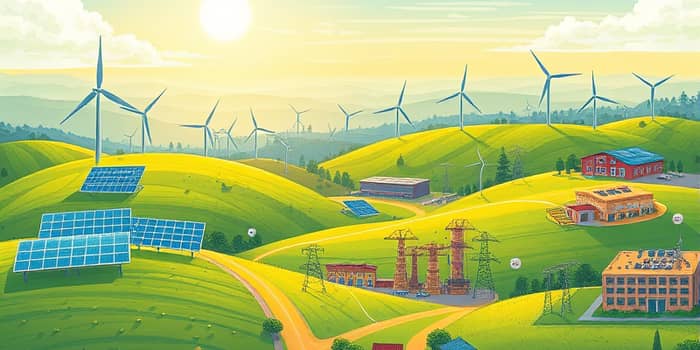
The global energy landscape is undergoing a profound transformation as climate policy incentives catalyze record investments and fuel the rise of green energy stocks. Investors, companies, and communities are witnessing a powerful convergence of public support, private capital, and technological innovation.
Major legislative actions in the United States and abroad have unleashed a wave of funding for clean energy. In the U.S., the Infrastructure Investment and Jobs Act and the Inflation Reduction Act incentives together sparked more than $227 billion in announced investments in utility-scale solar, storage, wind, and hydrogen in just two years.
Of that total, $100 billion has already materialized, with an additional $82 billion directed to distributed renewables and heat pumps. State governments bolstered the momentum by offering a record $24 billion in tax breaks in 2022 to attract large-scale renewable projects, especially in regions with high decarbonization targets and favorable permitting environments.
Global energy investment is poised to hit a record $3.3 trillion in 2025, with clean technologies capturing more than two-thirds of that sum. Approximately $2.2 trillion will flow into renewables, nuclear, grids, storage, efficiency, and electric transport, roughly double the spend on fossil fuels.
Solar PV takes center stage, slated to attract $450 billion in new funds, making it the largest single category of global energy investment. Nuclear power is not far behind, with commitments surpassing $70 billion in 2025, a 50% jump over five years.
The trend is unmistakable: “Ten years ago fossil fuel investment was higher than investment in electricity. Now, it is exactly the opposite.” Capital is shifting toward electrification to meet rising demand and upgrade grid capacity.
Investors seeking exposure to this megatrend are turning to leading renewable energy companies. Several stocks stand out for their strong performance and growth outlook.
Other industry titans such as First Solar, Vestas Wind Systems, GE Vernova, and Sungrow Power Supply also benefit from robust order books, manufacturing investments, and supportive policies.
The clean energy transition is generating far more than carbon reductions. It is fostering a domestic clean energy manufacturing revival and creating millions of jobs across construction, operations, and supply chains.
Manufacturing investments are strategically directed toward resilience and equity. The IRA’s incentives for disadvantaged and low-income communities ensure that economic benefits reach historically underserved regions, driving local growth and job creation.
Lower energy costs for consumers and businesses are another key payoff. Improved efficiency standards and scalable renewables deployments are reducing electricity prices over the long term, bolstering both household budgets and industrial competitiveness.
Despite the momentum, challenges remain. Grid infrastructure requires extensive upgrades to handle intermittent supply and increased loads. Transmission bottlenecks in key regions can delay project timelines and inflate costs.
Supply chain constraints for critical components like semiconductors, rare earth elements, and battery materials pose additional risks. Diversifying suppliers and enhancing domestic processing are vital to mitigate geopolitical dependencies.
Regional policy variations also shape investment patterns. States with clear decarbonization roadmaps and streamlined permitting processes attract more capital, while others lag behind, potentially exacerbating economic disparities.
As climate policies evolve globally, the shift toward electrification and clean technologies will accelerate. Investors can capitalize on this paradigm shift by focusing on companies with strong balance sheets, diversified project pipelines, and clear pathways to profitability.
Policymakers, meanwhile, must continue refining incentive structures, investing in grid modernization, and fostering equitable economic development. Collaboration between public and private sectors will be key to sustaining momentum and scaling innovations.
Ultimately, climate policy incentives have set in motion a transformative cycle of investment, innovation, and growth. Green energy stocks are not merely beneficiaries of this wave—they are active drivers of a cleaner, more sustainable economic future.
For investors and stakeholders alike, the message is clear: the era of renewable energy is here, and its benefits extend well beyond environmental impact—to economic resilience, social equity, and long-term value creation.
References













